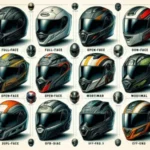A chest compression feedback device (CCFD) is a device that monitors the compression levels of the thoracic cavity during CPR.

The chest compression feedback device was initially designed as a way to improve the quality of CPR, but it has since been found to be effective in other areas as well.
In this post, we are going to discuss the different types of CCFDs, the different uses for CCFDs, and the benefits of using CCFDs. We will also discuss the different types of chest compression, the benefits of each type of chest compression, and the different types of chest compression devices. We will also discuss the different types of CCFDs, the different uses for CCFDs, and the benefits of using CCFDs.
1. How does a CPR chest compression feedback device work?
A CPR chest compression feedback device monitors your heart rate and provides feedback to help you compress the chest more effectively during CPR. The device is connected to the chestpiece that you wear during CPR and sends signals to the device to tell you when to start and stop compressions. This feedback helps you to provide more effective CPR and reduce the risk of death in cardiac arrest.
2. The types of CPR CCFDs
There are a few types of CPR chest compression feedback devices on the market. Some devices monitor heart rate, others pressure, and still others provide feedback on both heart rate and pressure.
Monitoring heart rate is the most important function of a chest compression feedback device because it allows rescuers to determine the level of compression needed to maintain a cardiac arrest victim’s heart rate.
Pressure feedback devices are important for two reasons. First, they allow rescuers to gauge the level of pressure being applied to the chest and second, they provide feedback on how well the rescuers are compressing the chest.
Some devices also provide feedback on both heart rate and pressure. This is important because it allows rescuers to better understand how well they are compressing the chest.
3. How a CPR chest compression feedback device monitors chest compression
A CPR chest compression feedback device is a small, handheld device that is used to measure the amount of chest compression that is being delivered. The device is designed to help improve the accuracy of CPR by providing feedback to the person performing the compressions.
The device consists of a pair of small, curved pads that are placed on the chest below the nipples. The pads are connected to a monitor that displays the amount of compression that is being delivered. The monitor also provides feedback to the person performing the compressions, telling them when the compression is too strong or too weak.
The CPR CCFD is a valuable tool that can help to improve the accuracy of CPR. By providing feedback to the person performing the compressions, the device can help to ensure that the compressions are delivered consistently.
4. How a CPR CCFD alerts the rescuer

A CPR chest compression feedback device is a small, wearable device that monitors a rescuer’s chest compression rate during CPR. The device is attached to the rescuer’s chest, and it gives an audible or vibrating feedback signal when the compression rate reaches a preset threshold.
The device has several important uses. For example, it can help rescuers achieve a higher compression rate during CPR, and it can also help rescuers to avoid over-compressing the victim’s chest. By monitoring the rescuer’s compression rate, the device can also help to prevent injuries to the rescuer’s own chest.
Chest compression feedback devices are becoming increasingly popular, and they are often used in conjunction with other CPR devices, such as automated external defibrillators (AEDs). In fact, most chest compression feedback devices are compatible with AEDs.
5. How to use a CPR chest compression feedback device
Chest compression feedback devices are used to monitor the effectiveness of chest compression during cardiopulmonary resuscitation (CPR). A CCFD is a small, wearable device that monitors the pressure exerted by the rescuer during chest compressions. This can help ensure that the rescuer is providing chest compressions at the correct depth and rate.
Chest compression feedback devices are also used to train rescuers in the correct technique for CPR. The device can be used to monitor the depth, rate, and rhythm of chest compressions. The device can also provide feedback on the rescuer’s breathing.
Chest compression feedback devices are available in a variety of brands and models. Some brands include the AED Plus, ResusciTrack, and TraumaLink.
6. How to adjust the CPR CCFD
Most chest compression feedback devices monitor heart rate, breathing, and blood pressure to give feedback to the rescuer during chest compression. The device should be adjusted to provide the rescuer with the most feedback.
7. How to troubleshoot a CPR chest compression feedback device
A CPR chest compression feedback device is a life-saving device used during cardiopulmonary resuscitation (CPR) to help guide the rescuer in the proper amount of pressure to apply to the heart. If the device is not working properly, it can cause the rescuer to apply too much pressure. It can lead to improper CPR and even death.
It is important to troubleshoot a CPR CCFD if it is not functioning properly in order to determine the cause of the problem and to take appropriate corrective action. To do this, you will need to inspect the device for any damage, check the batteries, and test the device to see if it is properly transmitting pressure.
If the CPR chest compression feedback device is damaged, you will need to replace it. If the batteries are not working, you will need to replace the batteries. Finally, if the device is not transmitting pressure, you will need to replace the device.
8. What to do if a CPR CCFD does not work
If your chest compression feedback device does not work, there are a few things you can do in order to troubleshoot the issue. First, check the battery. If it’s fully charged, the device should work. If it’s not working, it’s possible that the battery is dead or that the wire has come loose. Also, If the wire is loose, you can try re-securing it by twisting it once or twice.
If the device still does not work, it may be necessary to replace the entire device.
9. How to prevent a CPR chest compression feedback device from being used inappropriately
A CPR chest compression feedback device is a life-saving tool, but it can also be used inappropriately. If it’s not used correctly, the feedback device can cause unnecessary pain and damage. In this article, we’ll discuss some of the common ways a CPR CCFD can be used inappropriately, and how to prevent them.
The most common misuse of a CPR chest compression feedback device is for self-treatments. This is when the device is used to massage the chest in order to relieve pain and pressure. This is often done without the person’s consent or without the help of a doctor.
Another misuse of a CPR CCFD is to use it to create chest compression in order to increase blood flow. This is often done in an attempt to revive a person who has stopped breathing.
To prevent these abuses, it’s important to be aware of the different ways a CPR chest compression feedback device can be used and to ask the person using it if they are sure it is okay. If you are not sure, ask a doctor for help.






